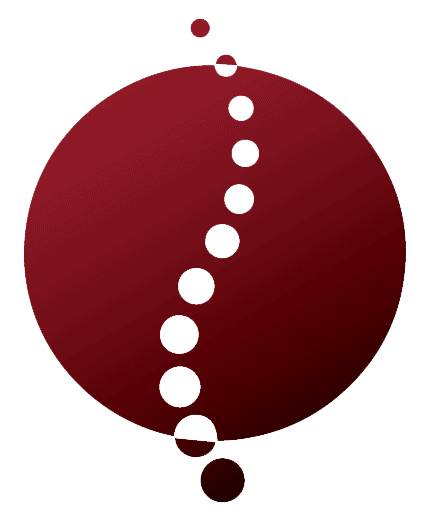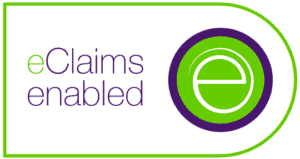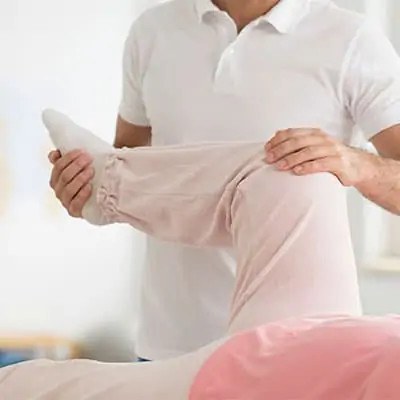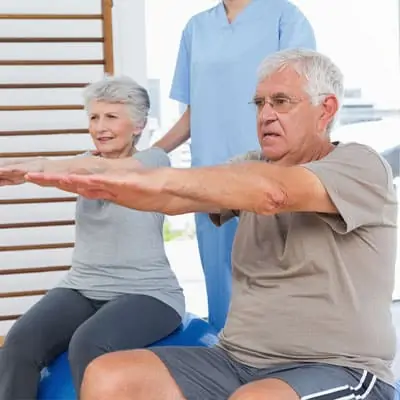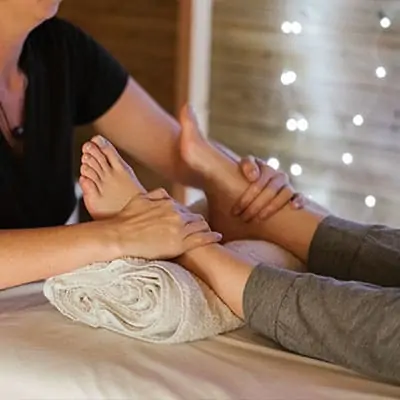Understanding Scoliosis
What is Scoliosis?
Scoliosis is a medical condition characterized by an abnormal lateral curvature of the spine. While a healthy spine appears straight when viewed from behind, a spine with scoliosis will show a noticeable ‘S’ or ‘C’ shape. This curvature can occur anywhere along the spine, but it most commonly affects the thoracic (mid-back) and lumbar (lower back) regions.
Scoliosis can affect individuals of all ages, from children to adults. However, it is most frequently diagnosed during the growth spurts that occur just before puberty. The severity of scoliosis can vary significantly, ranging from mild curves that require minimal intervention to severe deformities that necessitate surgical treatment.
| Severity of Scoliosis | Cobb Angle Measurement |
|---|---|
| Mild | 10° – 20° |
| Moderate | 20° – 40° |
| Severe | 40° and above |
For more information on the different types of scoliosis, you can refer to our article on scoliosis types.
Importance of Early Detection
Early detection of scoliosis is crucial for effective management and treatment. Identifying the condition in its initial stages allows for a wider range of therapeutic options, including non-invasive methods. Early intervention can also help prevent the progression of the spinal curvature, reducing the need for more intensive treatments later on.
Regular scoliosis screenings, especially during childhood and adolescence, play a vital role in early detection. These screenings often involve a simple physical examination where a healthcare provider looks for signs of spinal curvature. If scoliosis is suspected, further diagnostic tests, such as X-rays, may be conducted to confirm the diagnosis and assess the severity of the condition.
| Scoliosis Screening | Frequency |
|---|---|
| School-aged children | Annually |
| Adolescents | Every 6 months during growth spurts |
Timely detection not only improves the chances of successful treatment but also helps in managing symptoms and maintaining overall spinal health. For more details on the diagnosis process, visit our section on scoliosis diagnosis.
By understanding scoliosis and recognizing the importance of early detection, you can take proactive steps towards managing the condition effectively. Explore our articles on scoliosis treatment and scoliosis exercises for more information on managing scoliosis.
Signs and Symptoms
Recognizing the signs and symptoms of scoliosis is crucial for early detection and treatment. Understanding these indicators can help you seek timely medical advice and manage the condition effectively.
Common Signs of Scoliosis
Scoliosis often presents itself through visible signs that can be observed during routine activities or physical examinations. Here are some common signs to watch out for:
- Uneven shoulders
- One shoulder blade protruding more than the other
- Uneven waist
- One hip higher than the other
- Leaning to one side
These signs are typically more noticeable when you bend forward. If you observe any of these indicators, it is advisable to consult a healthcare professional for a thorough evaluation. For more details on the clinical signs, visit our article on scoliosis symptoms.
Symptoms to Look Out For
In addition to the visible signs, scoliosis can manifest through various symptoms. These symptoms can range from mild to severe, depending on the curvature of the spine. Here is a list of symptoms you should be aware of:
- Back pain or discomfort
- Muscle spasms
- Limited range of motion
- Fatigue due to muscle strain
- Difficulty breathing (in severe cases)
| Symptom | Frequency in Scoliosis Cases (%) |
|---|---|
| Back Pain | 60% |
| Muscle Spasms | 40% |
| Limited Range of Motion | 30% |
| Fatigue | 20% |
| Difficulty Breathing | 10% |
If you experience any of these symptoms, it is important to seek medical attention for a proper diagnosis. Understanding the full spectrum of scoliosis symptoms can help you manage the condition more effectively.
For more information on how to manage these symptoms, explore our articles on scoliosis treatment and scoliosis physical therapy.
By being aware of the common signs and symptoms, you can take proactive steps toward early detection and effective management of scoliosis. Remember, timely diagnosis plays a crucial role in mitigating the impact of this condition on your quality of life.
Diagnosis Process
Accurate diagnosis of scoliosis is essential for effective management and treatment. The process typically involves a combination of a physical examination and imaging tests.
Physical Examination
During a physical examination, your healthcare provider will assess your spine’s alignment, flexibility, and the presence of any asymmetries. They will look for common signs of scoliosis, such as uneven shoulders, a prominent ribcage, or a visible curve in the spine. You may be asked to perform specific movements to evaluate your range of motion and any discomfort you might experience.
One common method used during the physical examination is the Adam’s Forward Bend Test. In this test, you will be asked to bend forward at the waist with your arms hanging down. This position can make any spinal curvature more noticeable. If an asymmetry or curve is detected, further diagnostic measures will be recommended.
Imaging Tests for Diagnosis
Imaging tests provide a detailed view of the spine and help confirm the diagnosis of scoliosis. The most commonly used imaging techniques include X-rays, MRI, and CT scans.
X-rays
X-rays are the primary imaging tool used to diagnose scoliosis. They provide clear images of the spine and allow for the measurement of the degree of curvature. The Cobb angle is used to quantify the curvature’s severity:
| Cobb Angle | Severity |
|---|---|
| Less than 10° | Mild |
| 10° – 20° | Moderate |
| Greater than 20° | Severe |
MRI
Magnetic Resonance Imaging (MRI) is used to get a more detailed view of the spinal cord and surrounding tissues. It helps identify any underlying conditions that might be contributing to scoliosis, such as tumors or infections.
CT Scans
Computed Tomography (CT) scans offer a comprehensive three-dimensional view of the spine. They are particularly useful in complex cases where detailed imaging is required to plan surgical interventions.
For more information on the symptoms to look out for, visit our article on scoliosis symptoms. If you’re interested in learning about the different types of scoliosis, check out our section on scoliosis types. Proper diagnosis is the first step to effective scoliosis treatment and management.
Types of Scoliosis
Understanding the different types of scoliosis is crucial for accurate diagnosis and effective treatment. Scoliosis can be classified into three main types: idiopathic, congenital, and neuromuscular.
Idiopathic Scoliosis
Idiopathic scoliosis is the most common type, accounting for around 80% of all scoliosis cases. The term “idiopathic” means that the exact cause is unknown. Idiopathic scoliosis can be further divided based on the age of onset:
- Infantile Idiopathic Scoliosis: Occurs in children aged 0-3 years.
- Juvenile Idiopathic Scoliosis: Occurs in children aged 4-10 years.
- Adolescent Idiopathic Scoliosis: Occurs in adolescents aged 11-18 years.
| Age Group | Percentage of Idiopathic Cases |
|---|---|
| Infantile | 1% |
| Juvenile | 10-15% |
| Adolescent | 85-90% |
Idiopathic scoliosis often goes unnoticed until a child undergoes a routine scoliosis screening or shows visible signs like uneven shoulders or hips. Early detection is key to managing the condition effectively.
Congenital Scoliosis
Congenital scoliosis is a result of vertebral anomalies present at birth. These anomalies occur due to improper formation or segmentation of the vertebrae during fetal development. Congenital scoliosis can vary in severity, with some cases being mild and others requiring surgical intervention.
| Condition | Percentage of All Scoliosis Cases |
|---|---|
| Congenital Scoliosis | 10% |
Children with congenital scoliosis may also have other congenital abnormalities, such as kidney or heart issues. Therefore, a comprehensive medical examination is often necessary. To learn more about the causes of congenital scoliosis, visit our article on scoliosis causes.
Neuromuscular Scoliosis
Neuromuscular scoliosis arises from neurological or muscular conditions that affect the body’s ability to maintain proper spinal alignment. Common conditions associated with neuromuscular scoliosis include cerebral palsy, muscular dystrophy, and spinal muscular atrophy.
| Condition | Percentage of All Scoliosis Cases |
|---|---|
| Neuromuscular Scoliosis | 10% |
This type of scoliosis tends to progress more rapidly than idiopathic or congenital scoliosis. Treatment often involves a combination of bracing and physical therapy, and in severe cases, surgery may be necessary. For those seeking non-surgical options, our article on scoliosis alternative treatments offers additional insights.
By understanding the different types of scoliosis, you can better navigate your diagnosis and treatment options. Each type has its own set of challenges and treatment protocols, so it’s essential to work closely with your healthcare provider for a tailored approach to managing your condition. For more information on living with scoliosis, check out our articles on scoliosis management and scoliosis exercises.
Treatment Options
When it comes to managing scoliosis, several treatment options are available. These options depend on the severity of the curve, the age of the patient, and other individual factors.
Observation and Monitoring
For mild cases of scoliosis, especially in growing children, doctors may recommend observation and regular monitoring. This approach involves periodic check-ups to ensure that the curve does not worsen over time. Early detection and continuous monitoring are crucial, as they can help determine if and when more aggressive treatments are needed.
| Severity | Monitoring Frequency |
|---|---|
| Mild (10-20°) | Every 6 months |
| Moderate (20-40°) | Every 4-6 months |
| Severe (40° and above) | Every 3-4 months |
Regular observation is particularly important for children and adolescents, as their bones are still growing. To understand more about how scoliosis is identified early, visit our page on scoliosis screening.
Bracing and Physical Therapy
For moderate scoliosis, bracing and physical therapy are common treatment options. Braces are designed to prevent further curvature of the spine and are often recommended for children and teens who are still growing.
| Brace Type | Wear Time (Hours/Day) |
|---|---|
| Full-time Brace | 16-23 |
| Night-time Brace | 8-10 |
In addition to bracing, physical therapy can help strengthen the muscles surrounding the spine, improve posture, and increase flexibility. Specific exercises tailored for scoliosis can be highly beneficial. You can explore more about beneficial exercises in our article on scoliosis exercises.
Surgical Interventions
In severe cases where the spinal curvature is progressing rapidly or causing significant discomfort, surgical intervention may be necessary. The most common surgical procedure for scoliosis is spinal fusion, which involves fusing two or more vertebrae together to prevent further curvature.
| Surgical Procedure | Recovery Time |
|---|---|
| Spinal Fusion | 6-12 months |
| Growing Rod Surgery | Periodic adjustments until growth completion |
Surgery is typically considered when the Cobb angle (a measure of the curvature) exceeds 40-50 degrees and when non-surgical methods have not been effective. For more insights into the types of scoliosis that may require surgical intervention, you can read about scoliosis types.
Living with scoliosis can be challenging, but understanding your treatment options can help you make informed decisions about your care. For further information on managing scoliosis, visit our article on scoliosis management.
Living with Scoliosis
Living with scoliosis requires certain lifestyle adjustments and access to the right support and resources. In this section, we will discuss essential lifestyle modifications and the available support systems to help you manage scoliosis effectively.
Lifestyle Modifications
Adopting specific lifestyle changes can help manage scoliosis symptoms and improve your overall quality of life. Here are some key modifications to consider:
-
Exercise and Physical Activity: Regular exercise can help strengthen your back muscles and improve flexibility. Engaging in activities such as swimming, yoga, and pilates can be particularly beneficial. For targeted exercises, visit our article on scoliosis exercises.
-
Posture and Ergonomics: Maintaining good posture is crucial for managing scoliosis. Ensure that your work and living environments are ergonomically designed to support your spine. Use chairs with good lumbar support and avoid slouching.
-
Weight Management: Keeping a healthy weight can reduce the strain on your spine and minimize scoliosis symptoms. A balanced diet and regular physical activity can help you achieve and maintain an optimal weight. For more on nutrition, check out scoliosis nutrition.
-
Pain Management: Techniques such as heat therapy, massage, and stretching can alleviate scoliosis-related pain. For more information, read our article on scoliosis pain.
Support and Resources
Managing scoliosis is easier with the right support and access to helpful resources. Here are some options to consider:
-
Support Groups: Joining a support group can provide emotional support and practical advice from others who are also living with scoliosis. These groups can be found both in-person and online.
-
Physical Therapy: Working with a physical therapist can provide personalized exercise plans and techniques to manage scoliosis effectively. Learn more about this in our article on scoliosis physical therapy.
-
Educational Resources: Staying informed about scoliosis is crucial for managing the condition. Utilize educational materials from reputable sources to keep up-to-date with the latest information and treatment options. For a deeper understanding, explore our article on scoliosis awareness.
-
Medical Support: Regular check-ups with your healthcare provider are essential for monitoring the progression of scoliosis and adjusting treatment plans as needed. This can include consultations with specialists such as orthopedic doctors and chiropractors.
-
Bracing: For some individuals, wearing a brace can help manage scoliosis. Bracing is often recommended for children and adolescents to prevent further curvature of the spine. For more details, visit our article on scoliosis brace.
By implementing these lifestyle modifications and utilizing available resources, you can effectively manage scoliosis and maintain a fulfilling life.
